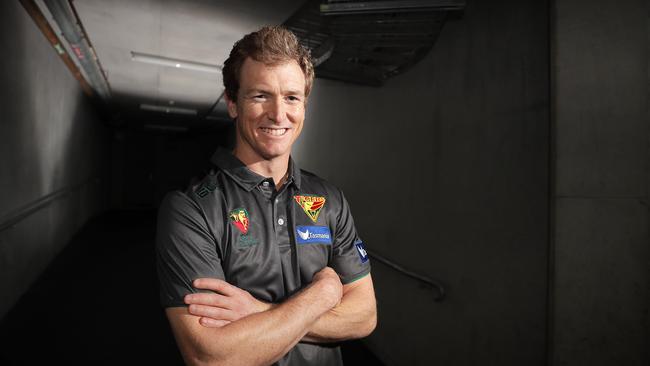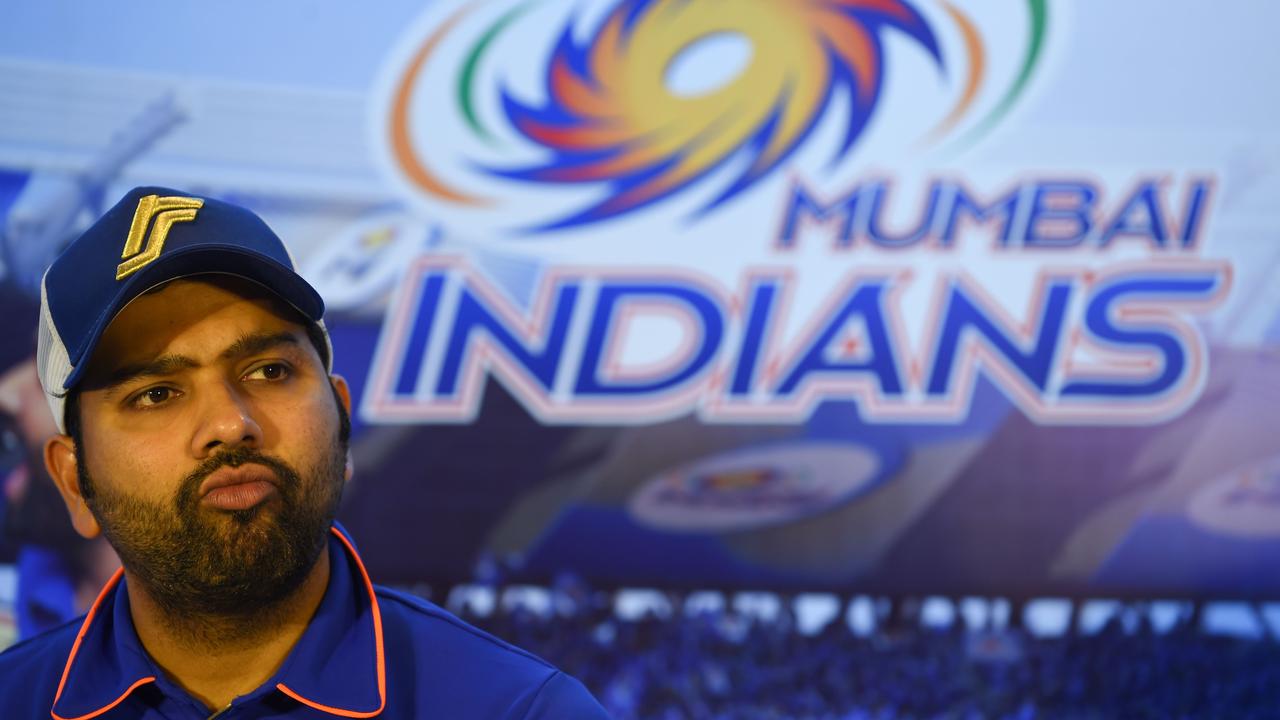Inside George Bailey’s genes are the heart of Australian cricket
What goes in to making an Australian cricketer? Examining George Bailey’s genes is a good place to start.

What goes into making an Australian cricketer?
The question could be answered any number of ways, and the formula is one the boffins would dearly love to work out — imagine a eugenics department at the National Cricket Centre, cloning its own baggy green master race.
Until then, it’s worth consulting an intriguing new case study of a family tree with green and gold sprigs 13 decades apart.
Aged 36, Tasmania’s captain George John Bailey looks to be on a last playing lap after an honourable career including only five Tests but 120 other international caps; his great-great grandfather George Herbert Bailey also led Tasmania, and represented Australia on their non-Test tour of England in 1878.
This much I knew, but a unique book by Gold Coast-based journalist Martin Rogers reveals so very much more. It is called Cricket in the Genes, updating for the genome generation such tales of consanguinity as Dudley Nourse’s Cricket in the Blood and John Edrich’s Runs in the Family.
At 263 copiously illustrated pages, it’s the most comprehensive Bailey genealogy one could imagine, tree boughs almost breaking with detail, with cricket such a recurrent theme that had the current George done anything else with his life there would almost have been reason to doubt his patrimony.
Of course, as in every family chronicle, there is much more besides, including the obligatory convict quotient: George’s great-great-great-great-great grandmother was the First Fleet’s youngest female prisoner; his great-great-great-great grandfather was twice sentenced to death, for theft in England commuted to transportation, and for piracy in the colonies, having stolen a boat during one of his three escapes from jail.
But cricket quickly pervades the picture. George Gibson, whose father David it was who twice dodged the noose before becoming a successful pastoralist, represented Tasmania in the very first game of first-class cricket in the colonies, when the colony hosted a Victorian XI at Launceston Racecourse in February 1851. He later became a member of parliament, and father-in-law to George Herbert Bailey.
George Herbert’s clergyman father was also a votary of cricket. Before his recruitment by Tasmania’s Anglican Church, Reverend Brooke Bailey had fostered the game as headmaster of Ceylon’s prestigious Royal College, and insisted on an English boarding school education for his son heavy on the sport.
Born in Colombo, George Herbert grew into a polished specimen of Anglo-Australian manhood: a fine cricketer, footballer, diocesan lay reader and senior bank employee.
These were excellent credentials when the original colonial team to tour England was chosen, and it was arguably Bailey’s inclusion that entitled the combination to that proto-national descriptor “Australia”, he being the only player not from Victoria or NSW.
There might have been a second Tasmanian, 30-year-old opening batsman John Lake Allen Arthur, but two days after receiving an invitation to join the party he dropped dead of “brain fever”.
As it was, George Herbert Bailey alone carried the hopes of Tasmania, and discharged them honourably, finishing third in the batting averages, and might have played Test cricket but for the prior calls of the Union Bank. His gifted sporting sons with Isobel nee Gibson then ran into the generational calamity of the Great War.
Keith, lucky in that a cleft palate prevented his enlistment, played first-class cricket and senior football.
But Guy, who appeared in first-grade cricket for Melbourne University while studying medicine, was blown to atoms by an artillery shell; Roy, captain of Tasmania’s football team, never recovered from two exposures to poison gas; Alan, in the first XI at Hutchins, was invalided home from the Dardanelles with typhoid.
Pardon here a personal digression, substantiating the cliche about every Tasmanian being somehow related: turns out that Alan, George John’s great-great grandfather, married Marjorie Elvie Walch, whose great uncle was my great-great-grandfather Charles Edward Walch. So next time I see George I’ll be addressing him as “cuz”.
But what’s chiefly striking about the unfolding tale is the many different ways that the house of Bailey has shaped and been shaped by cricket. This is not a saga in the vein of the Mohammeds, the Chappells or the Waughs. The Bailey family’s relationship with cricket is not built around success alone but on a deep and abiding love.
George’s mother Carmen had a great-great grandfather, Joseph, among the founders of Melbourne’s Brighton CC.
Joseph’s four sons then played staggering volumes of school, club and social cricket, travelled miles to watch big games, collected cricketana, served as club officials. One son accomplished the notable double of playing club matches against W.G. Grace and during the Battle of Britain.
George Bailey’s father John, proud owner of a complete set of Wisden, has given a lifetime to cricket.
A player and captain at Launceston Grammar, he returned as coach for 15 years, where his son led a first XI team that included James Faulkner and Tom Triffitt; today, he leads Tasmania’s over-60s team.
At the end of Cricket in the Genes, George reflects that he has enjoyed the game so much he is unsure what will “replace cricket” in his life. The lesson of his heredity is that there is no need.
Cricket is a lifetime’s companion. There are numberless ways to savour and serve it, and they do not end with the hanging up of a cap or the passing on of a captaincy.
A concluding thought bubble: the background that made George Bailey an exemplary Australian cricketer equips him perfectly to succeed Mark Taylor on the Cricket Australia board.


